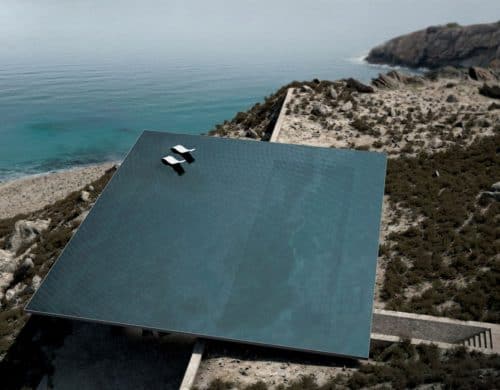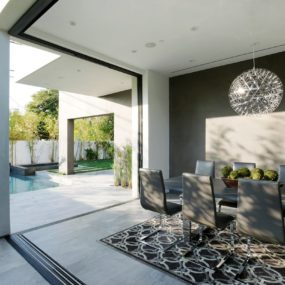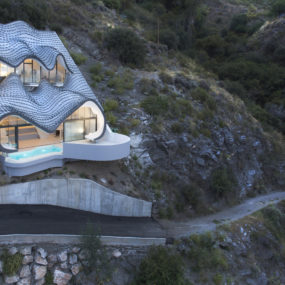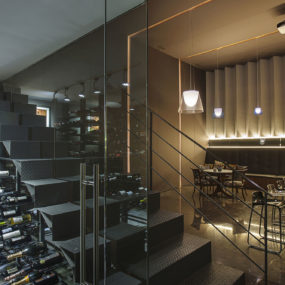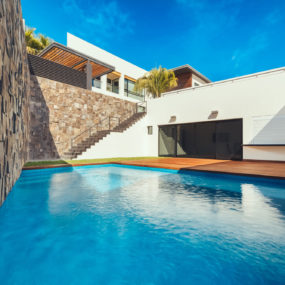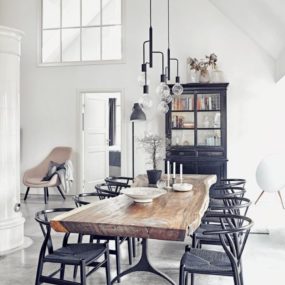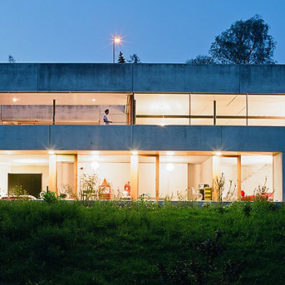
Built on the outskirts of a small city in northern Portugal, this home may at first seem to be at odds with the grassy, tree-lined atmosphere around it. After all, its concrete and glass structure and right-angled architecture don’t suggest much about nature. However, a closer look reveals that the dwelling, a home by Pitágoras Arquitectos, reveals that the property it sits on is ingrained into its design ethos both literally and figuratively. The black facade of the home disappears into a sloping hill on its lot, a hill which forms the basis for a central courtyard lawn. Large banks of windows dominate this yard in the middle of the house and at its rear, giving owners a direct view of the landscape, and doors located in nearly every room allow them direct access to the land surrounding the building.
While the public face of the house seems dark and private, once invited inside you’ll find it to be warm and inviting. Light wood floors extend throughout, and the style of the home’s furnishings is kept restrained and timelessly chic. On the bottom floor, free flow of traffic between spaces is encouraged; on the top, each private room has its own defined borders and entryways. Elements of Victorian tradition mingle with brand new decor innovations throughout, with pieces of every era in between. All of the different influences at work inside come together to form a coherent and beautiful whole, resulting in a residence that seems effortless and genuinely livable.
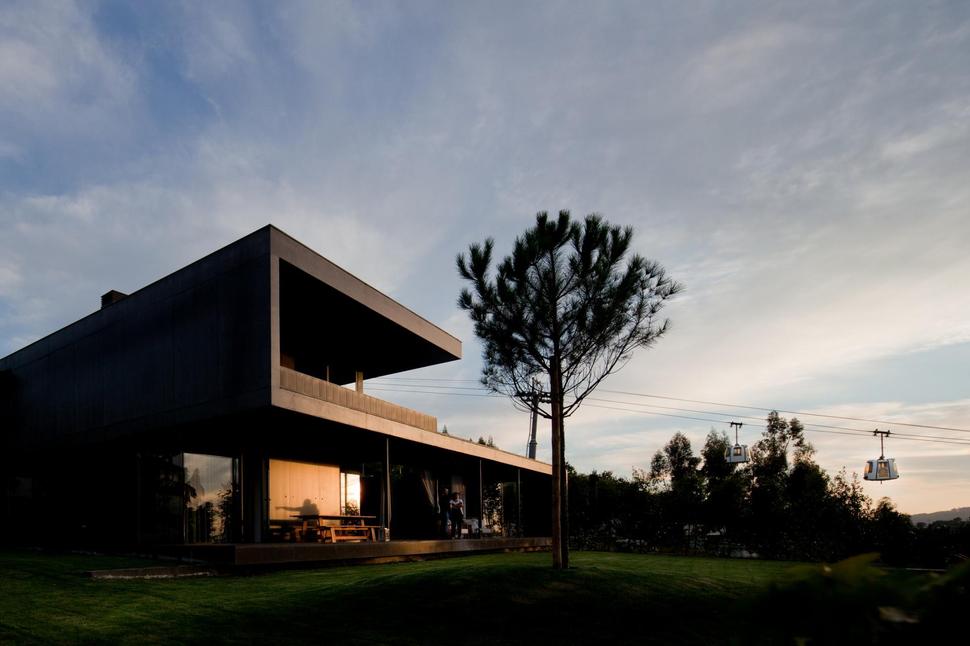
The building maintains a fairly low profile from every angle, especially for a two-story structure. The only point at which the second floor rises tall in any significant fashion is at one downhill corner, where the master bedroom and bathroom share a view.

As the night draws closer, lighting along the walls of the house and the ceiling of the bottom-floor deck helps to define the dark structure’s borders and keep outdoor space usable twenty-four seven.
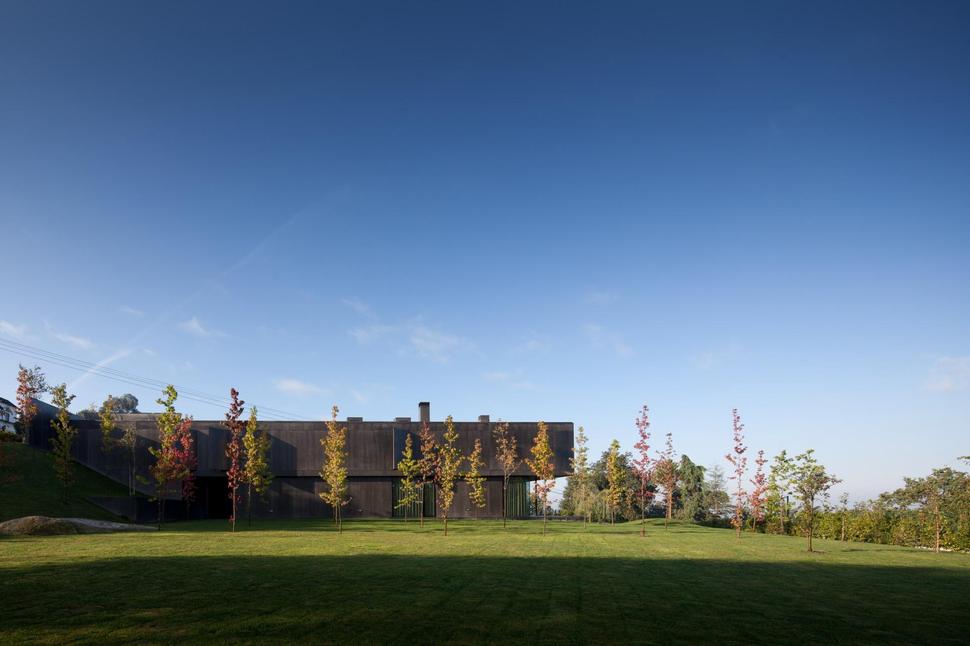
The house is partially set into a hill in the middle of a large, manicured lawn. The positioning of the dwelling gives the impression that it extends naturally from the slope behind it and onto the flat plain ahead.
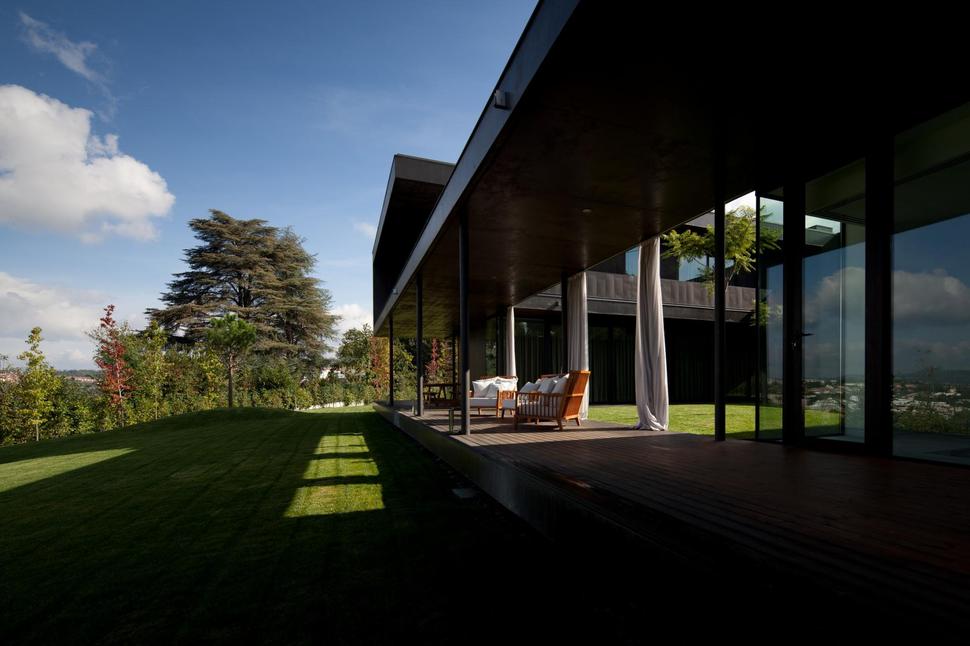
The house itself creates a “U” shape with a grassy outdoor social space in the middle, but a wide porch with views down the slope completes the design to make it appear fully rectangular. The living spaces of the dwelling are actually laid out in an “L” shape, with the right wing of the home comprised of a long indoor pool.
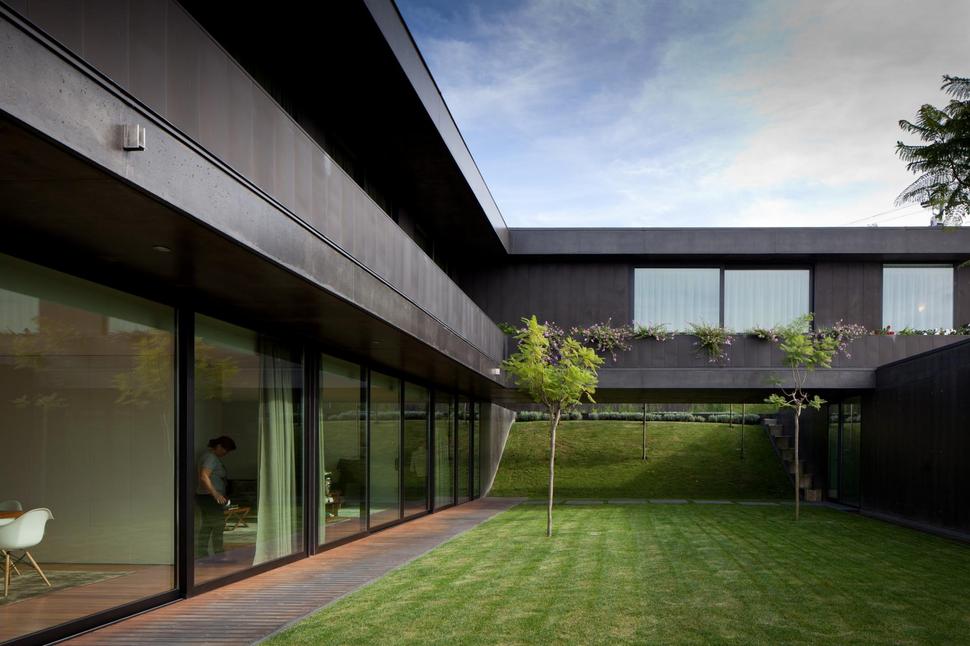
Hanging plants add a little bit of a natural, colorful touch to the the relatively harsh black walls of the house, brightening it and making it more inviting for residents and guests. Inside the courtyard, large glass walls let in light without exposing those inside to the gaze of their neighbors.
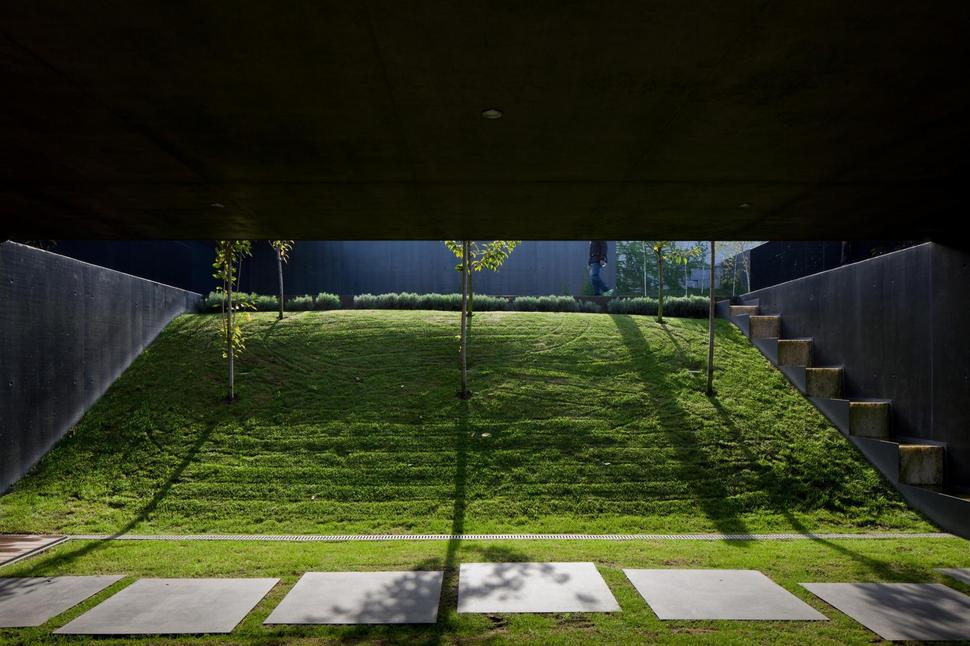
Leading up to the driveway at the highest elevation point of the lot is a smooth, sweeping hill that helps create the border of the courtyard opposite the patio deck. The structure of the house is built right into the hillside, with the bottom floor’s top lined up to the ground above.

A set of single-person steps on the hillside, lit at night, lead from the home’s driveway to the entrance of pool wing, giving a separate exterior entryway for that portion of the house.
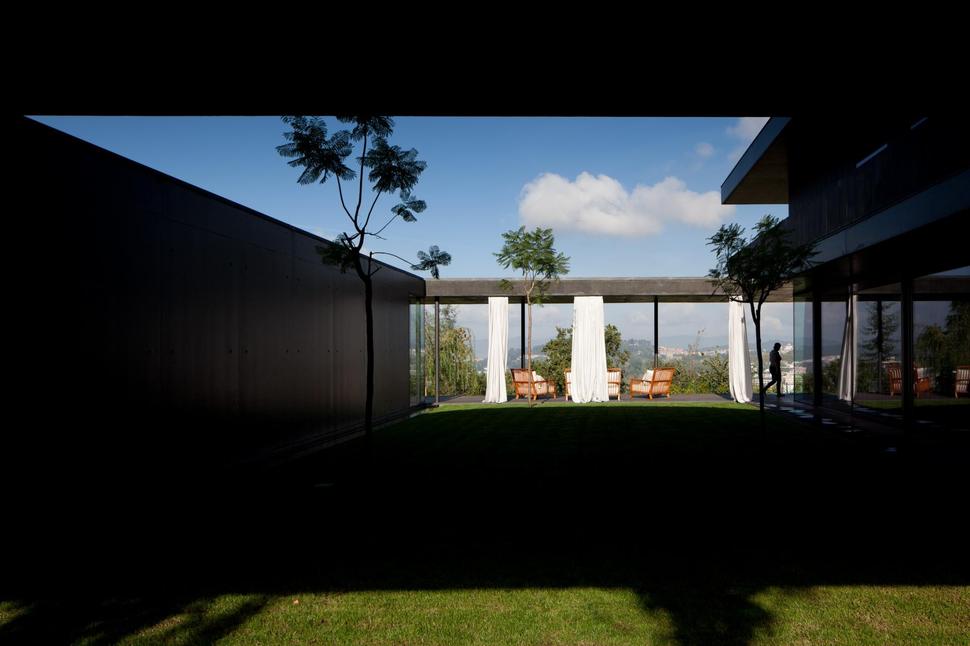
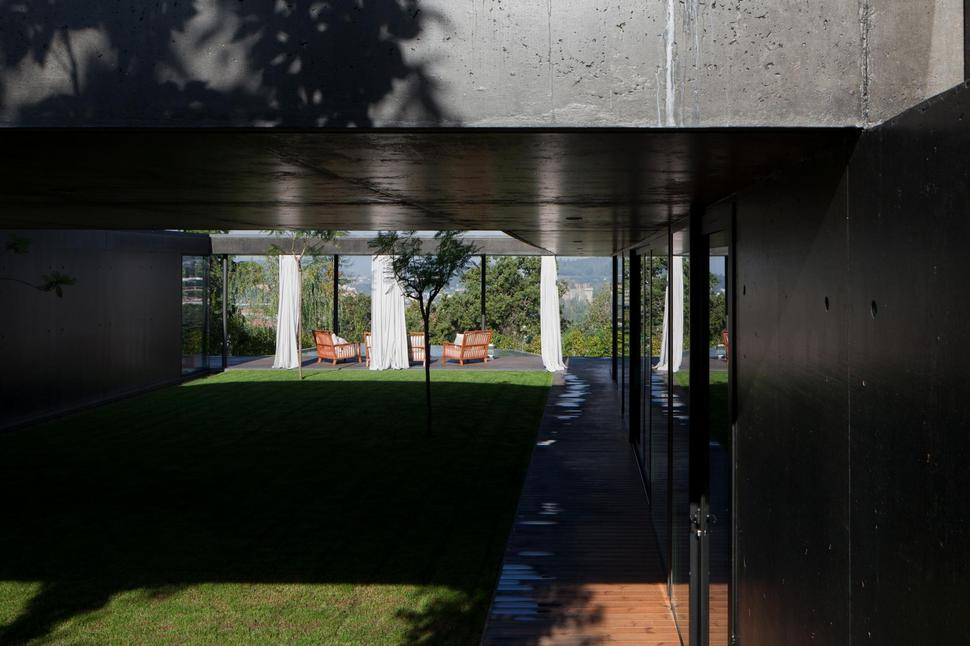
The exterior walls of the house are principally made of concrete, with metal panels occasionally used as accents. This solid, sturdy structure gives the residence a permanent and established feel despite its modern architecture.
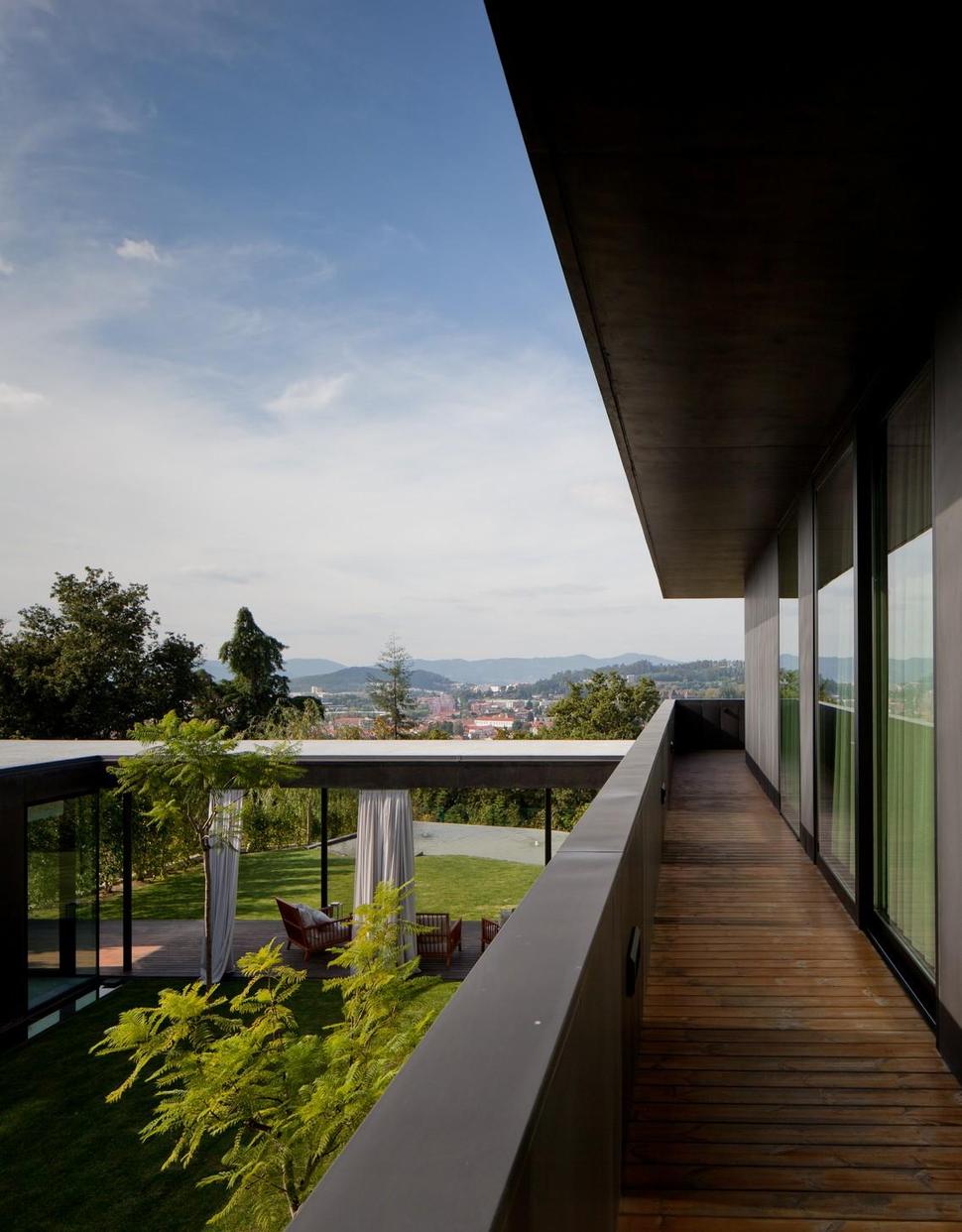
Both the porch and the upper deck have wooden floorboards, the only pieces of the exterior (aside from doors and windows) which aren’t black. The boards are still fairly dark-stained and kept under the shadow of overhangs, blending in rather than standing out against the black walls.

Most of the home’s windows are fully floor to ceiling, especially at its center. This eating area off the kitchen enjoys a two-side view down the hill and across the lawn.
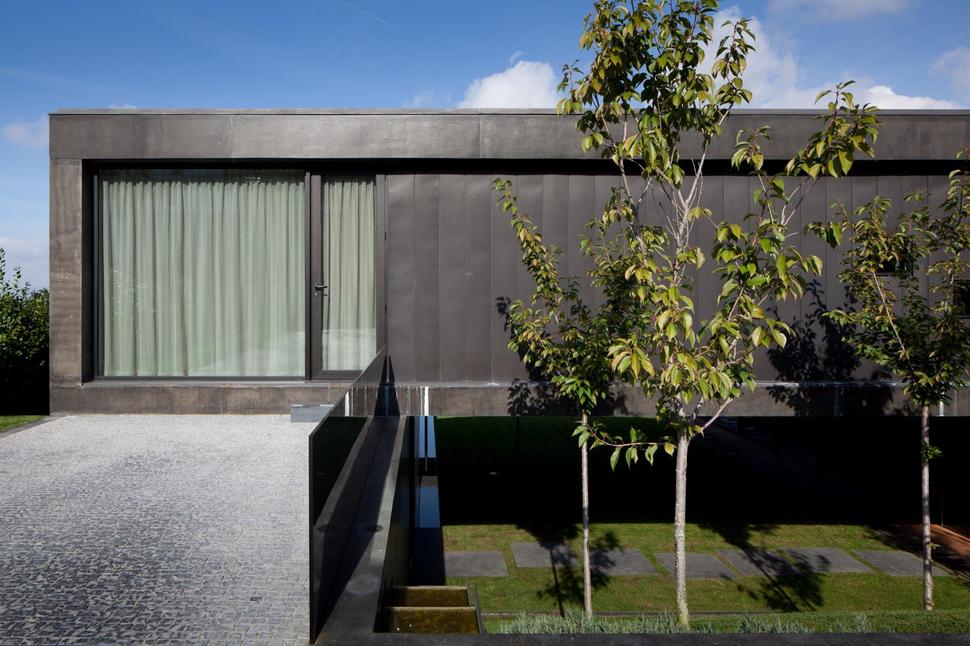
Next to the gravel driveway is another entrance to the pool wing of the dwelling, this one on the upper floor. In total, there are three different paths which access the pool, three of which come from outside.
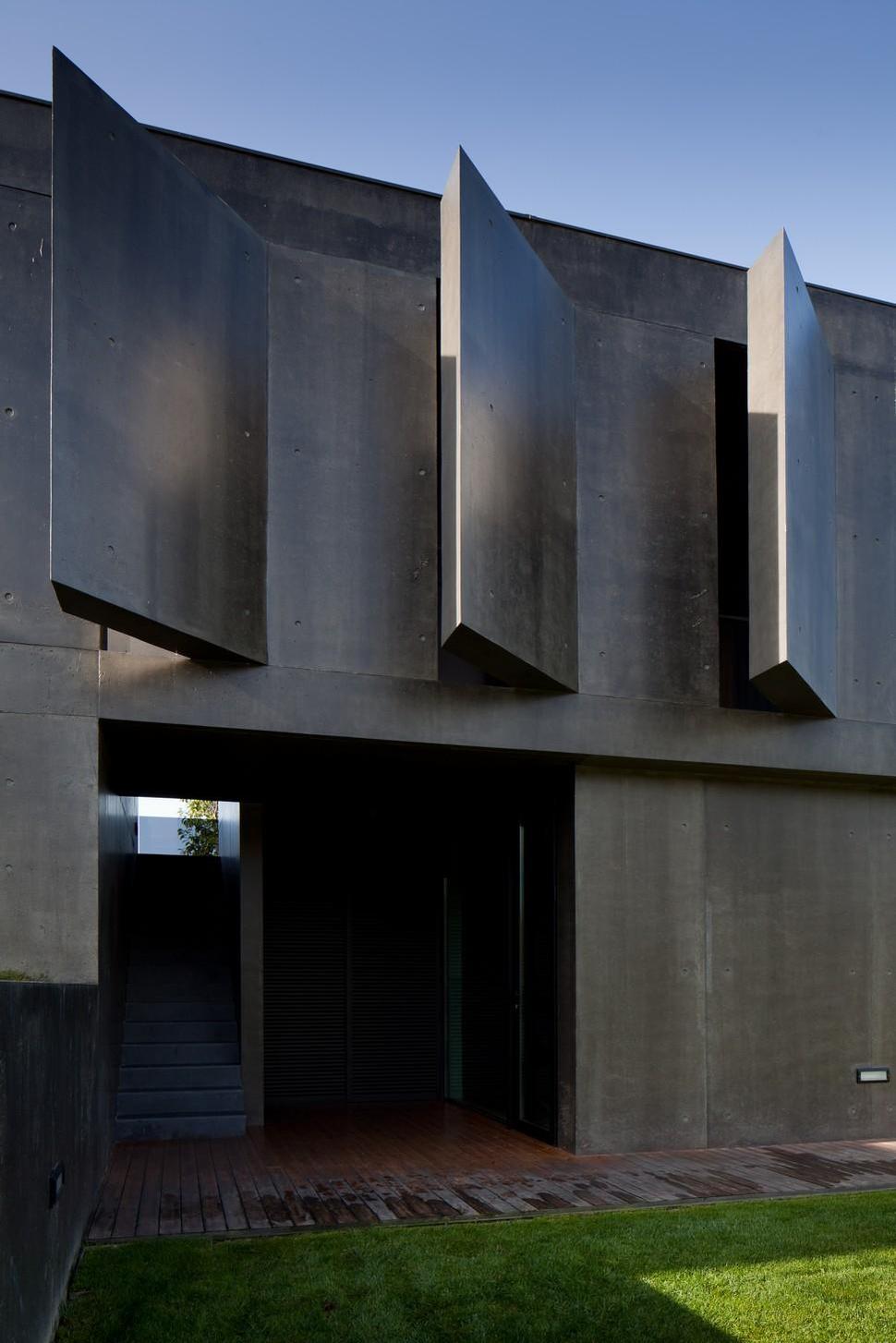
Angled concrete extensions of the wall next to the front door of the house help bring controlled light into that entryway, as well as spicing up the largely uniform architecture on that edge of the building.
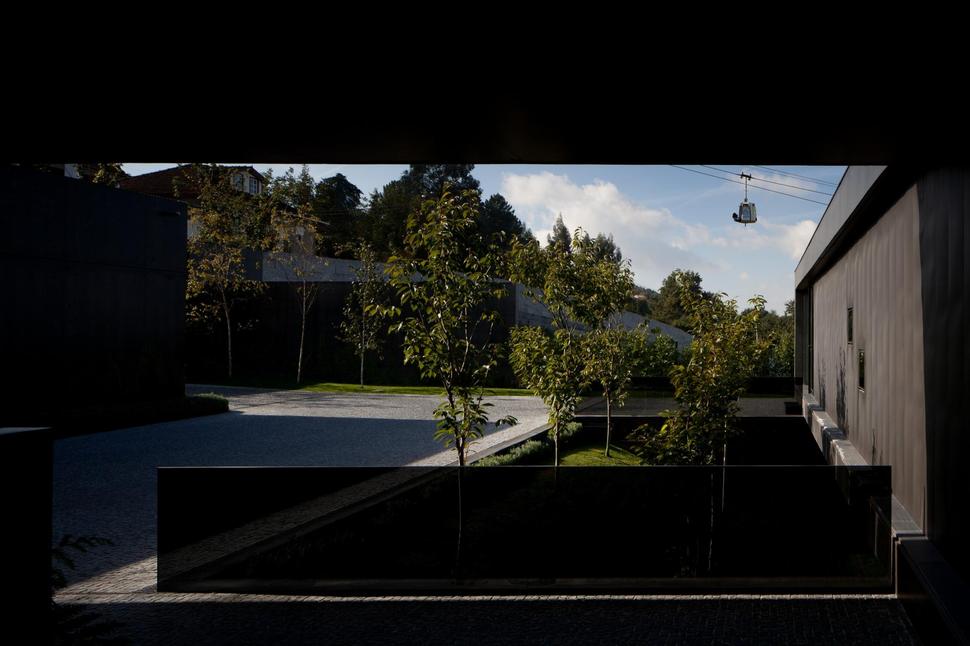
The walls bordering the driveway contain the smallest window openings of the house, as well as the least by number of any other area. The path to the door is set under a large structural overhang and behind a dark glass barrier, further emphasizing privacy from this public side of the abode.
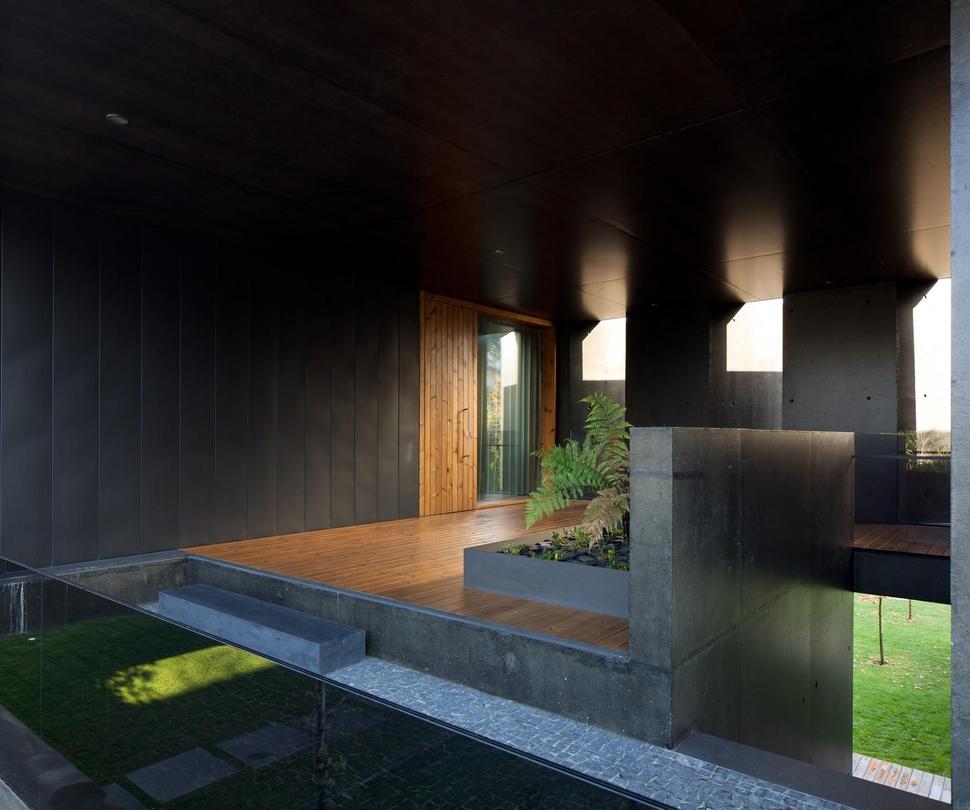

Inside, the color palette changes radically from flat black to pure white, with only the floorboards carried over from outdoors. The front door serves as a clever transition points between the two, covered in those very same boards which are present on both sides.
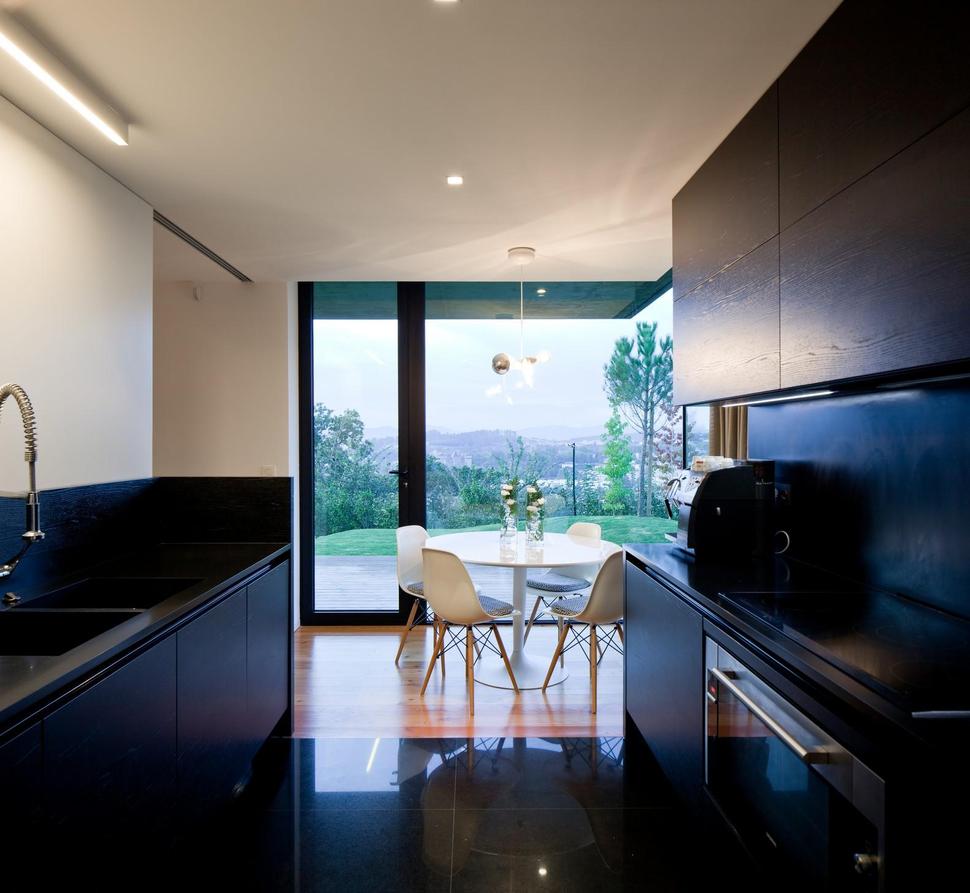
The kitchen is the darkest room of the house, with appliances and cupboards that mimic the look and feel of the concrete outside. Instead of concrete, however, they’re made of smooth stone, ceramic tile, and darkened wood.
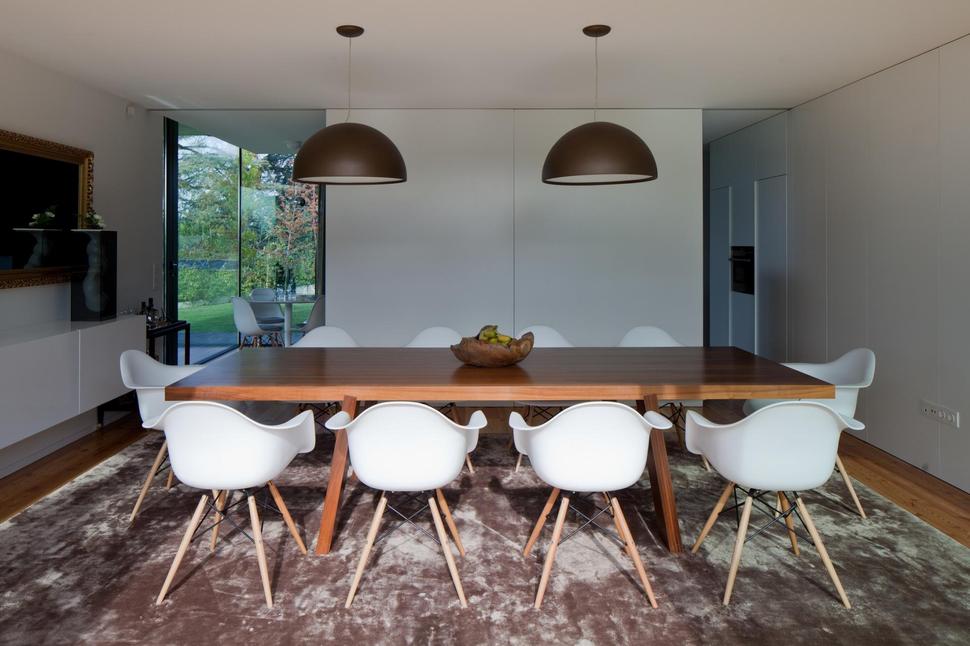
The dining room balances the influences of traditional elegance, Fifties futurism, and contemporary chic, blending together in a space that is at once minimal and complex.
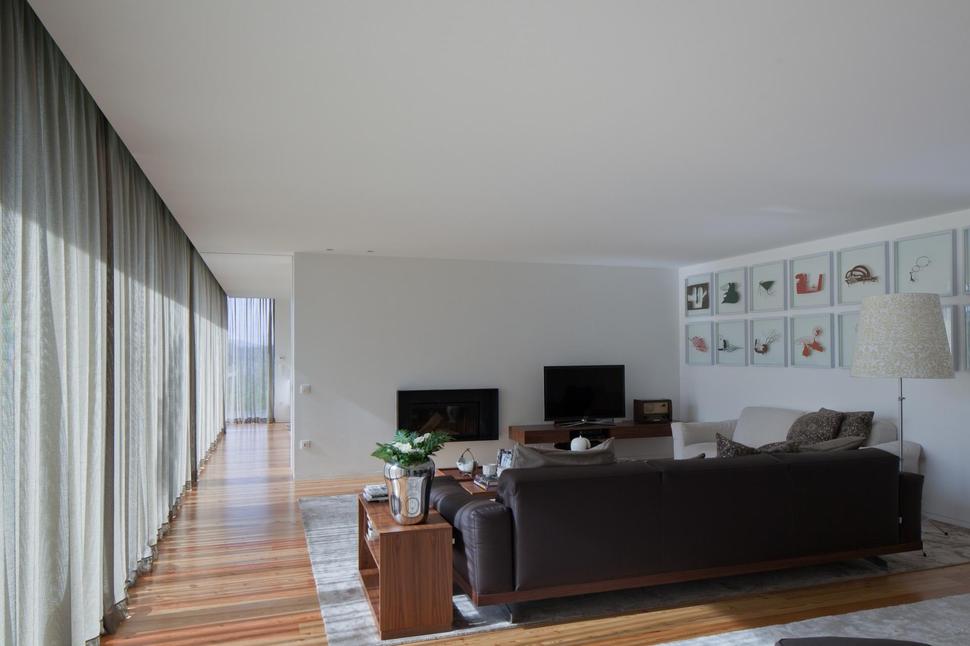
The environment inside the living room is very similar to that of the dining room, with simple and comfortable furniture and decor pieces merged into a classy, inviting whole. The living room also benefits from the warmth of a fireplace, built into one wall.
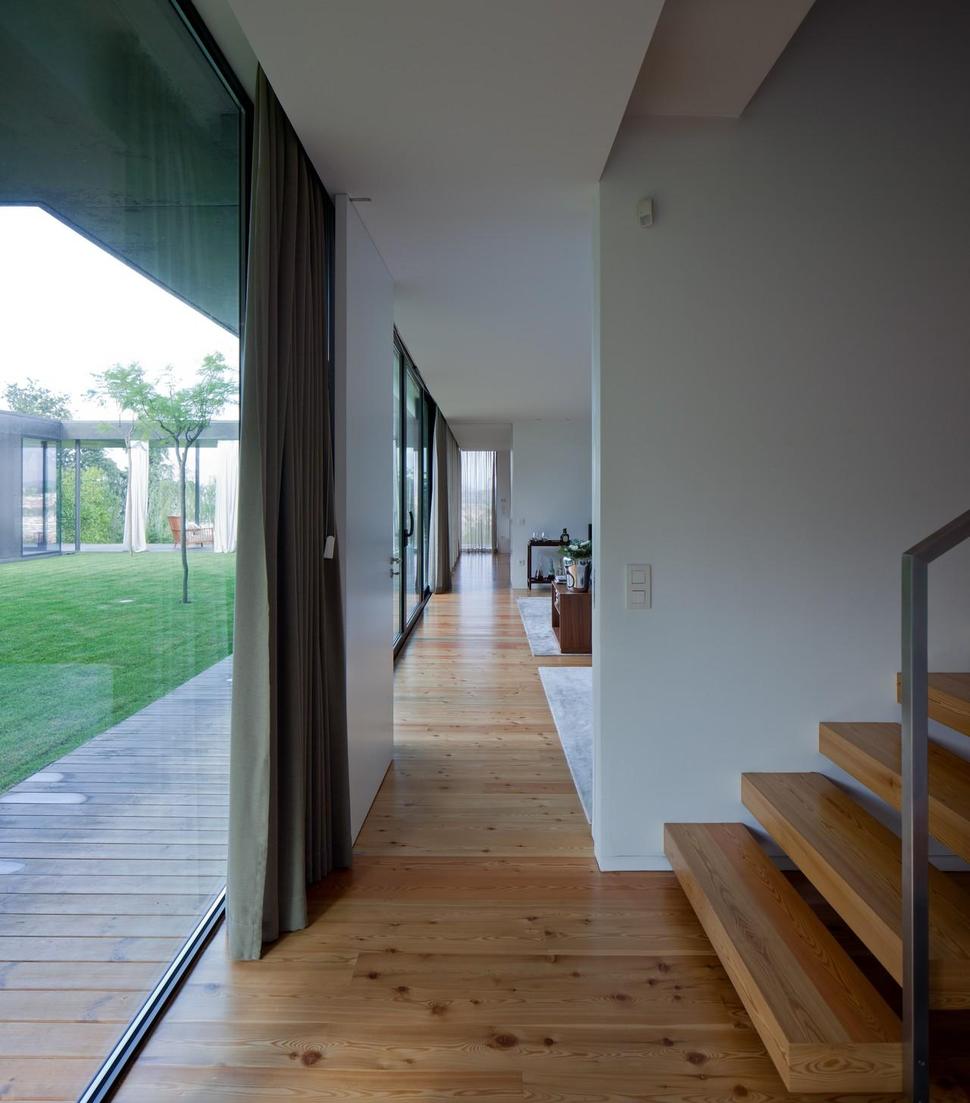
Instead of doorways separating each room on the lower floor, interior walls simply don’t extend all the way to the edge of the building, creating natural pathways at the border of the level’s rooms. The perfectly-fit carpets of the living room and dining room also help to define these passageways.
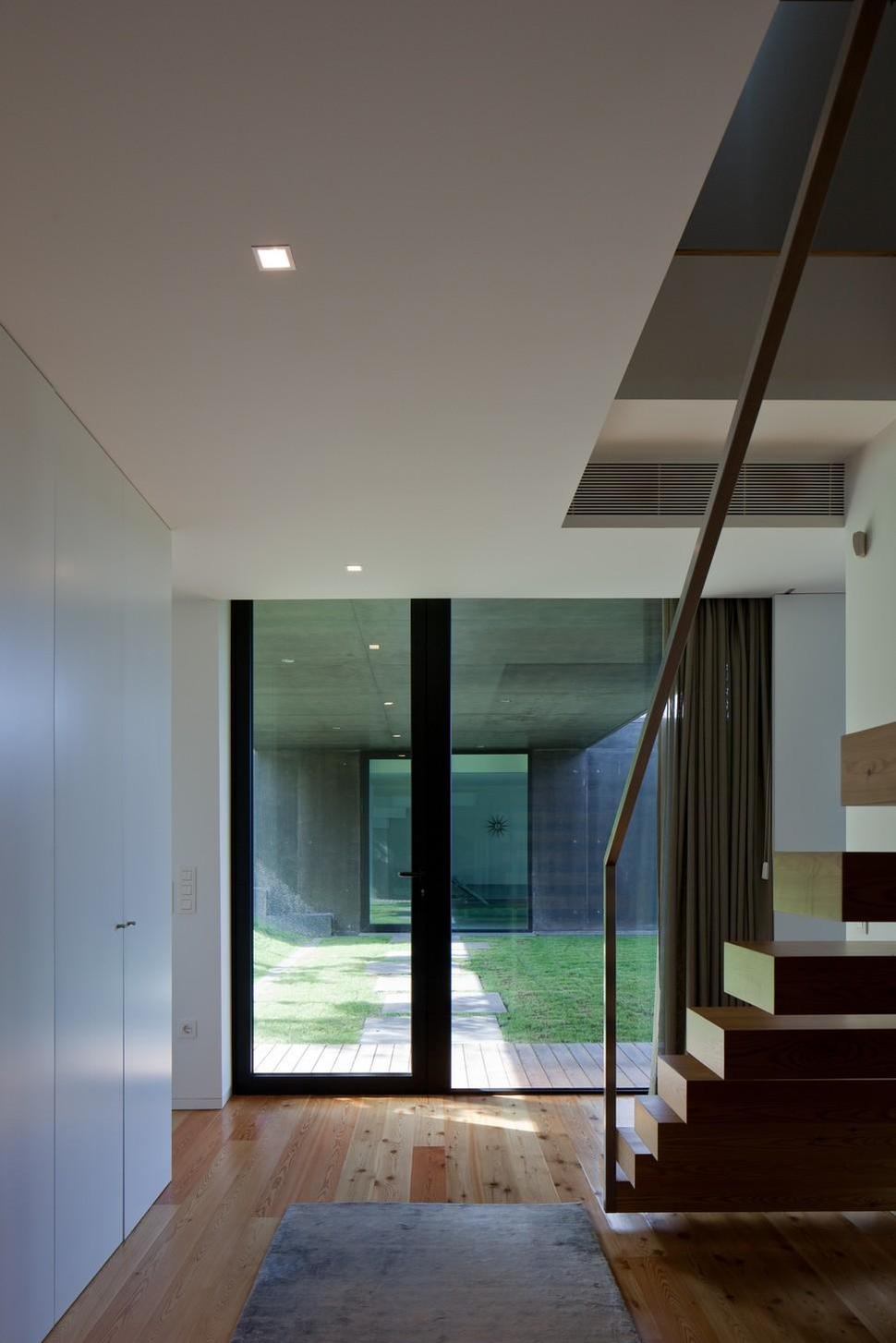
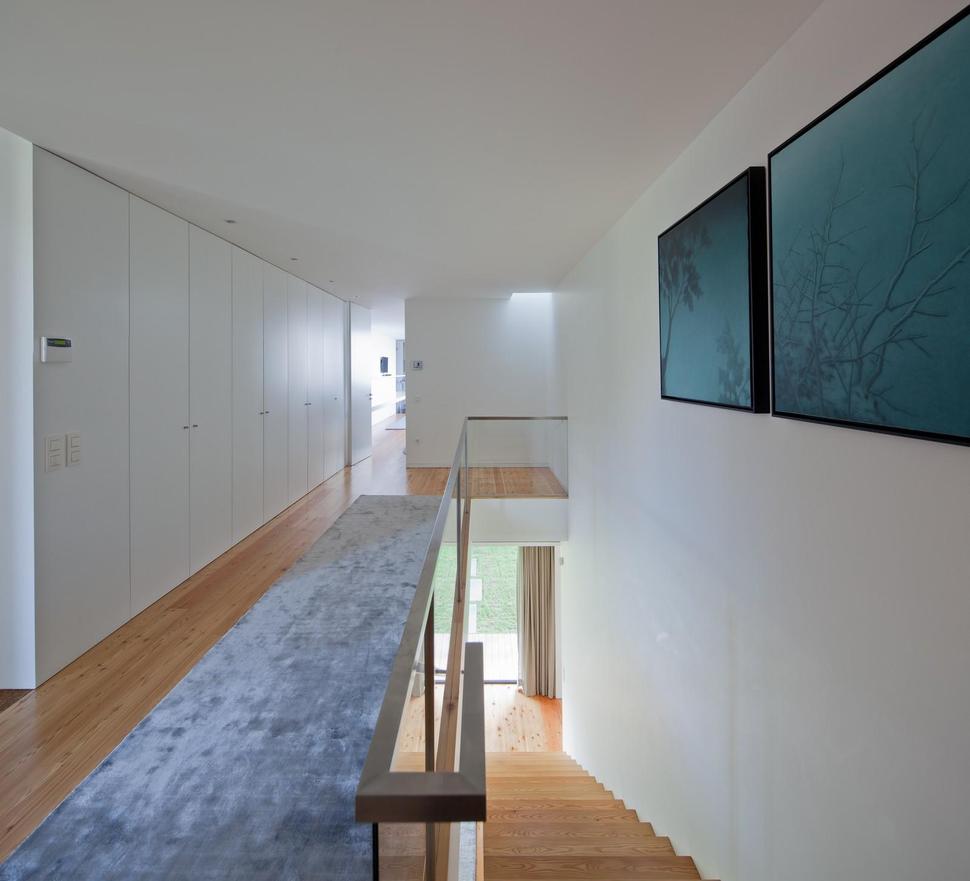
The second floor is formatted significantly differently from the first, with doors on each room ensuring the privacy of the private spaces upstairs. The uniform rug pattern from the lower floor carries over here, as well as the wood and wall finishes. The decor of the house is continuous, but its layout philosophy differs greatly between the two levels.
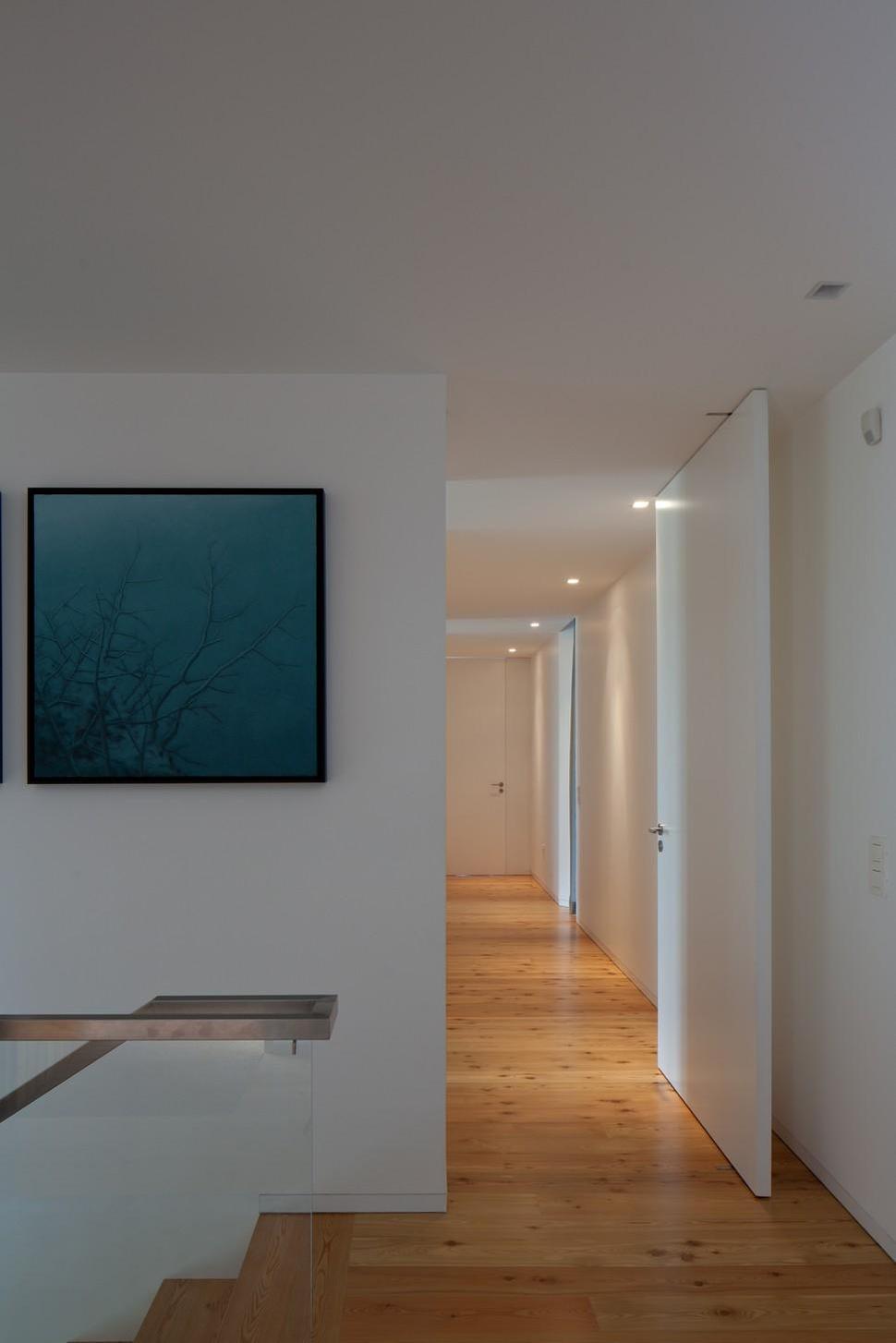
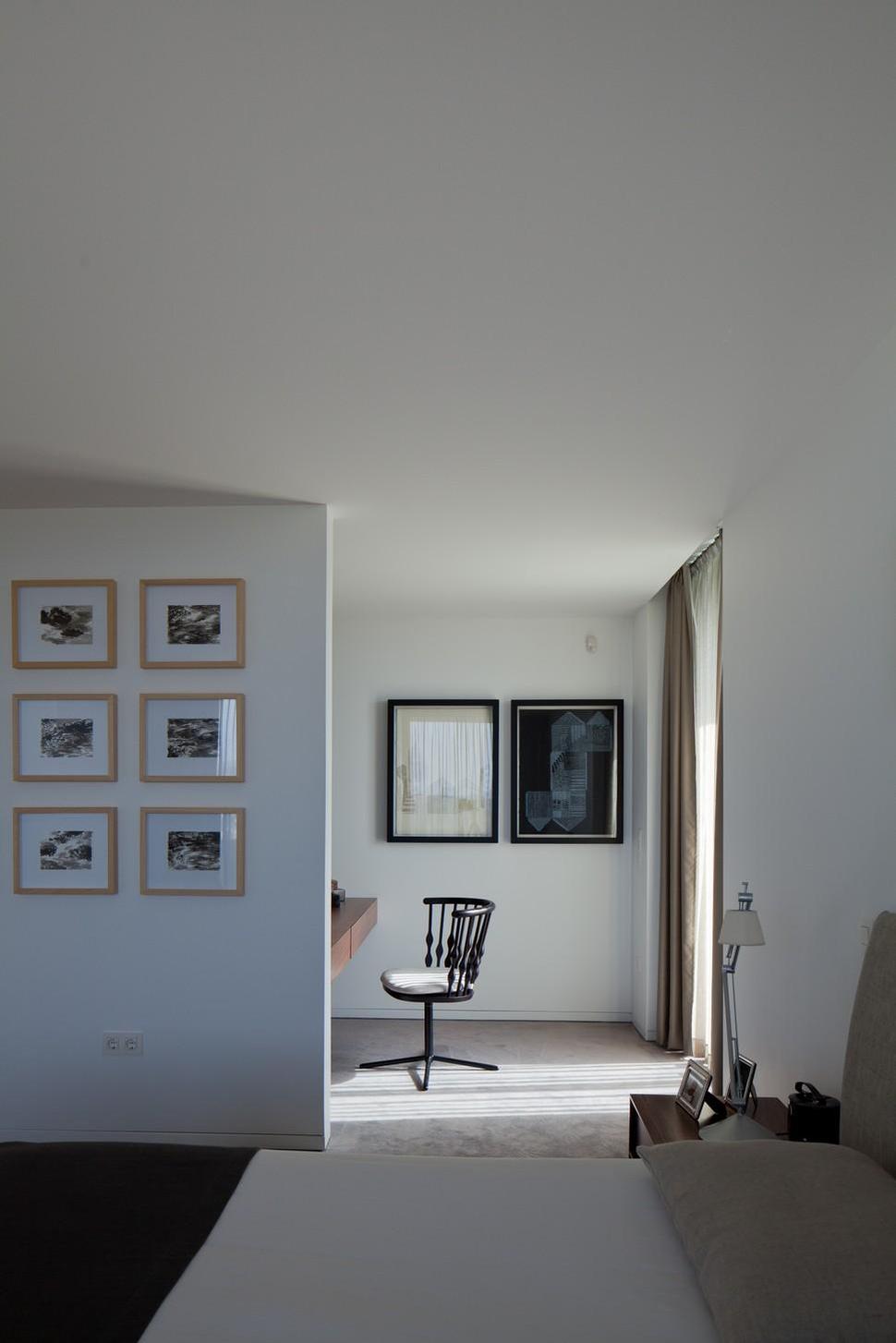
Each bedroom is spacious, but the master along the downward edge of the home is the largest by a significant margin, with a study area on the side and full suite luxuries built into its bounds.
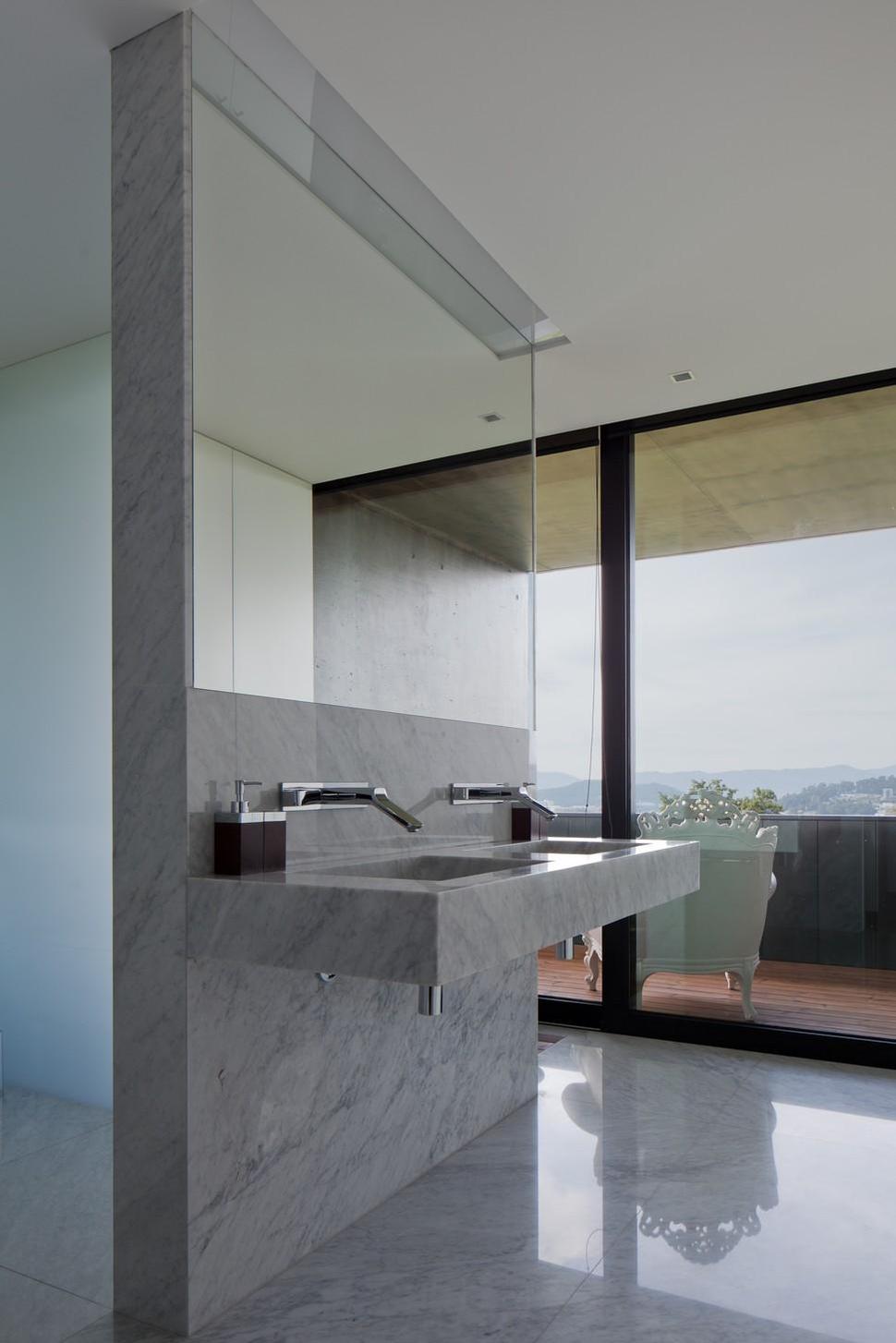
The master bathroom enjoys half the natural view of the suite, but privacy is protected by the solid black railings on the deck outside. Those looking up at the house from below have no sightline into the suite, but the residents have a sweeping view out.
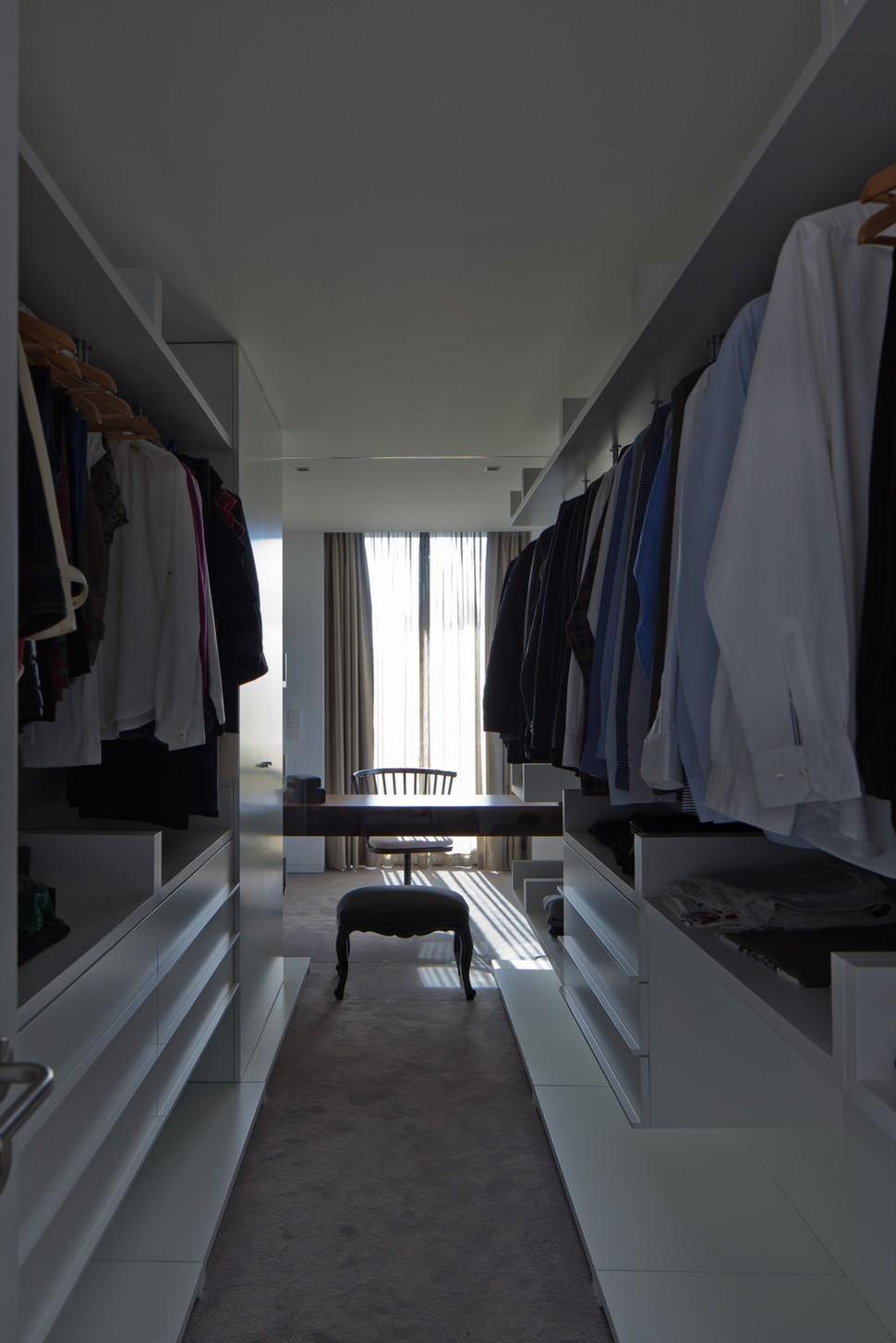
A spacious closet is set up with a hallway layout; the space’s rear wall is a single glass panel with a direct view of the study behind it.

On the opposite side of the house, the indoor pool is unconventionally long and thin, made to fit into the overall shape of the dwelling. A row of wide porthole-like skylights bring in shafts of light by day, while a wall with accent lighting illuminates the water at night. A spiral staircase leads down into the area from the upper floor.

The final entrance to the pool leads directly out onto the patio deck, allowing homeowners and their guests to move between the pool and anywhere else in and around the house with ease.
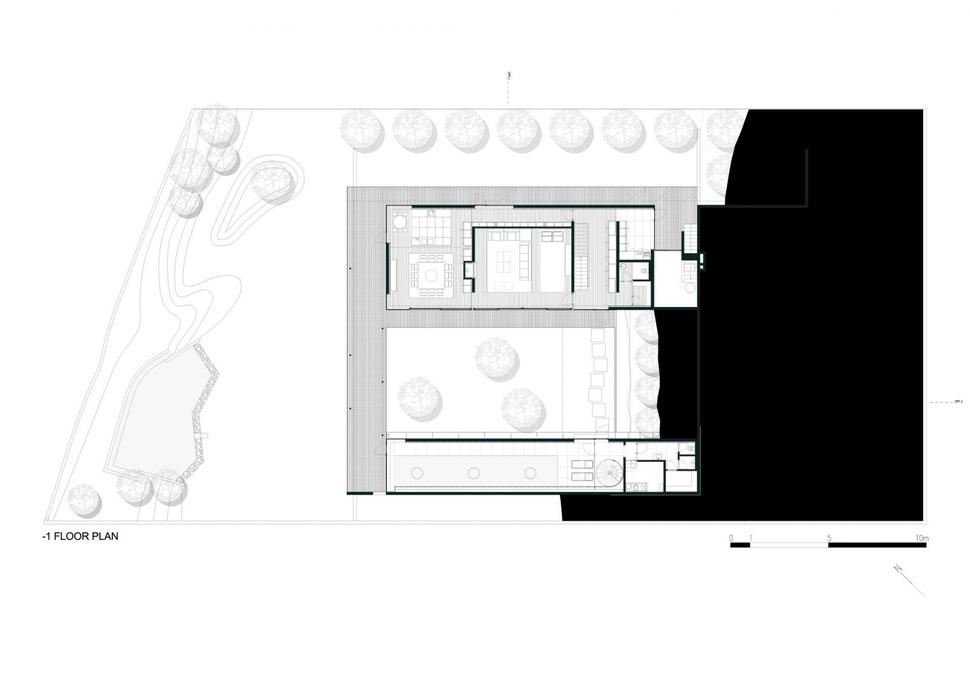
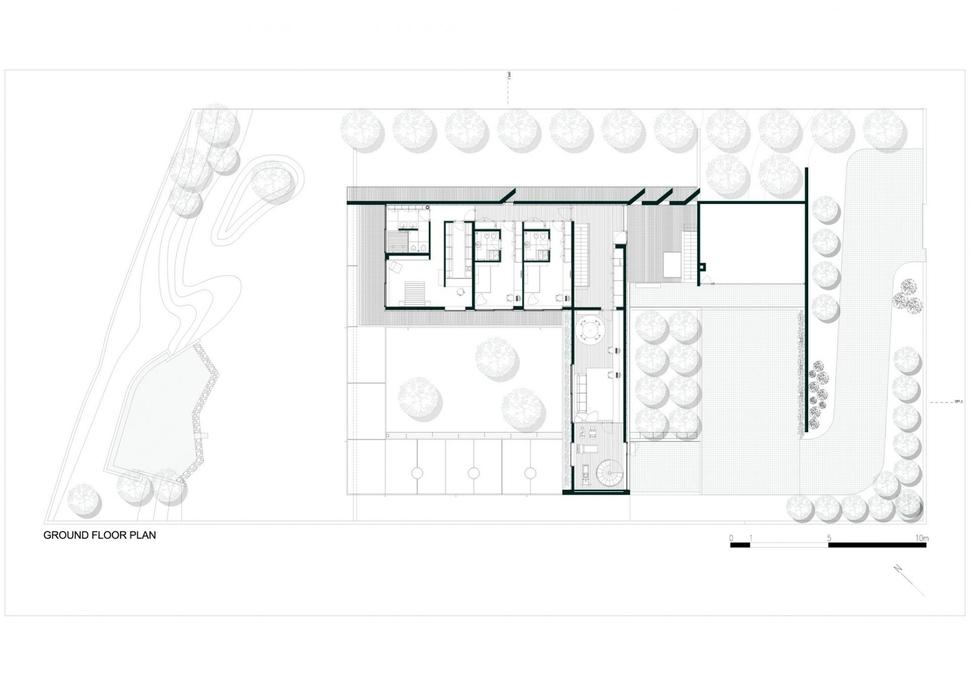
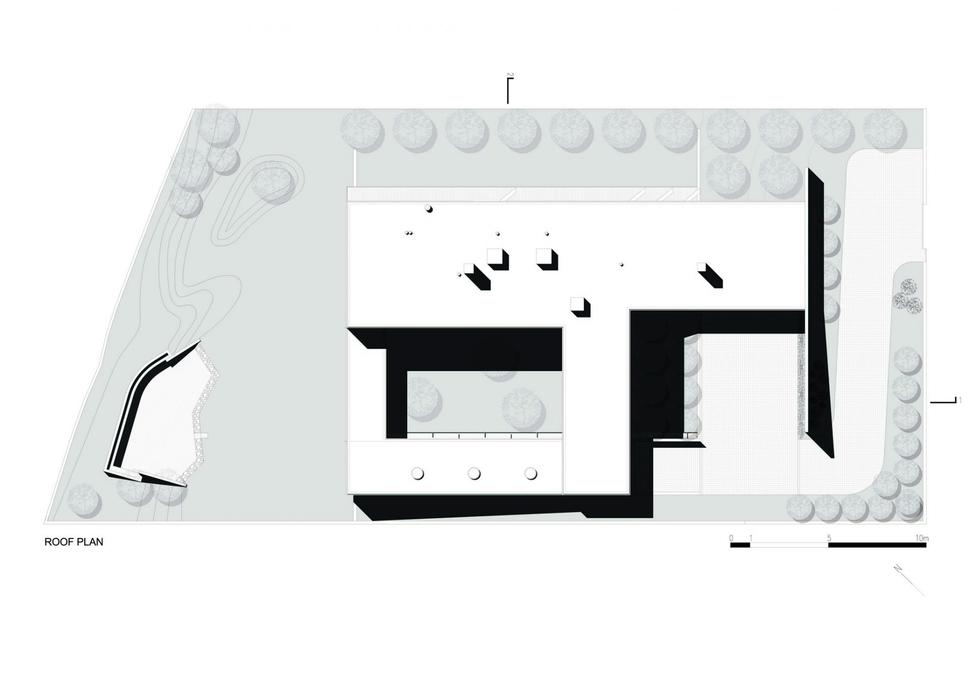

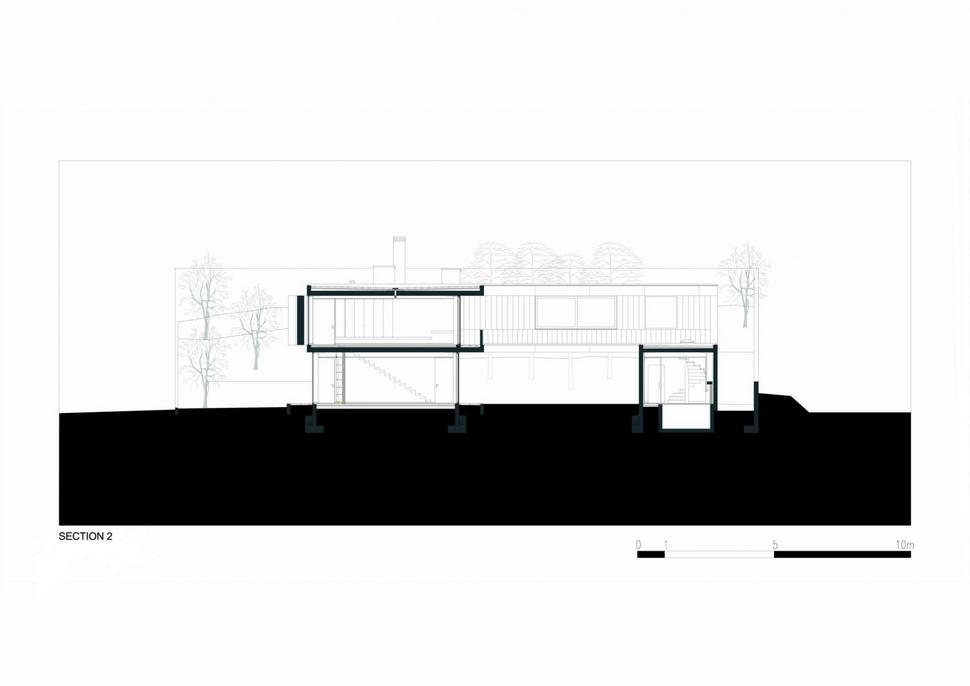
Pitágoras Arquitectos
